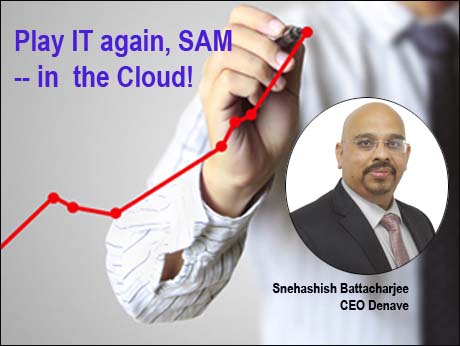
Snehashish Bhattacharjee, Global CEO & Co-Founder, Denave, suggests how software asset management needs to reinvent itself for the Cloud
July 15 2016: Globally, there is shift from conventional to cloud-based products, leading to a need for evolution of software asset management methodologies and practices. Cloud is expected to account for more than half of organization IT applications in a few years. There is a requirement for upheaval of the structural methodology and technology at work in an increasingly complex network of businesses and their asset management teams. Thus as per industry experts and software asset management (SAM) professionals, managing software application licenses will require a dedicated strategy with regular update basis the current developments in the industry.
A cloud-based application implementation and usage will differ across organizations. However, the need to maintain licensing compliance will remain. What increases the complexity is the variety of cloud platforms available – private, public, hybrid et al, thereby creating more technical and licensing challenges. Also, with cloud, customers don’t need to own everything. This can be problematic wherever the responsibility of compliance lies and how licensing obligations can be calculated. Managing this diverse cloud environment has its own challenges bringing to light many technical and licensing issues for enterprises:
The mix between private cloud, public cloud along with internal network and therefore option of the organization’s applications residing on a mix of these environments adds to the complexity. Accoding to industry analysts, there has been a significant rise in the use of mixed cloud environments. The conventional homogenous environments have progressed into heterogeneous platforms with multiple OS within the organization, virtualization and SaaS applications. Understanding and managing this mix of cloud, local and hosted applications along with compliance requirement will lead to a change in the way Software Asset Management (SAM) is conducted going forward.
The key objective of SAM is to manage and optimize the purchase, usage, management, renewal and/or disposal of an enterprise’s software applications. Advent of cloud-based applications solutions have made their job complex in lieu of varied licensing and technical aspects. The technology being used also needs to therefore evolve to cater to changed needs and requirements. Customers need support to understand their licensing requirements better. Therefore, it is important for SAM professionals to build and aid customers with the acquired understanding and intelligence in order to ensure that investments are made well and eventually doesn’t lead to over-spending or wastage. While the intelligence gathered from the cloud domain can be put to good use for predicting usage and individual behaviors, it becomes complicated due to the diverse nature of cloud and licenses attached with it. SAM professionals need to evolve as far as their understanding and expertise goes – it is no longer about applications installed on desktops or in a private network.
The future definitely showcases increased amount of capabilities and opportunities. Ultimately cloud becomes your sales asset which efficiently manages your software applications. It automatically gathers intelligence to enable precise utilization patterns. There will need to be a shift from policing and compliance to proactive cost effective control measures along with optimization of cloud solutions. Rather than just reducing audit impact, there is an opportunity for SAM solutions to evolve to a level where through real-time monitoring of usage and consumption, it can trigger insights into license usage led optimization of investments and therefore better compliance.